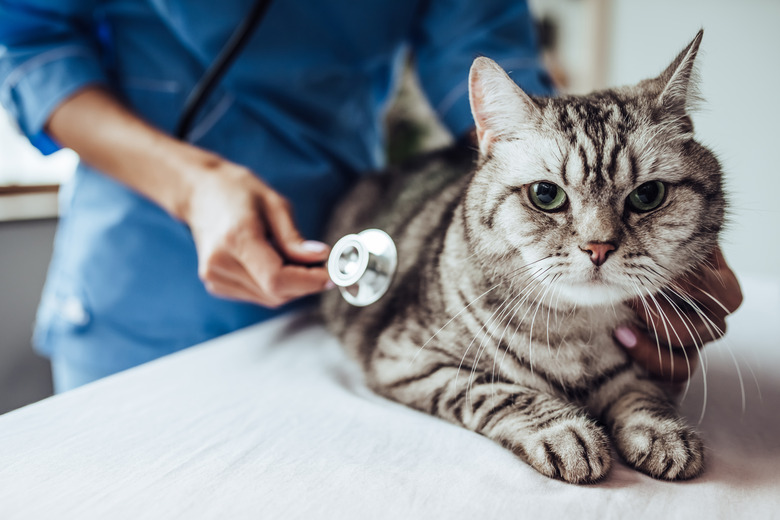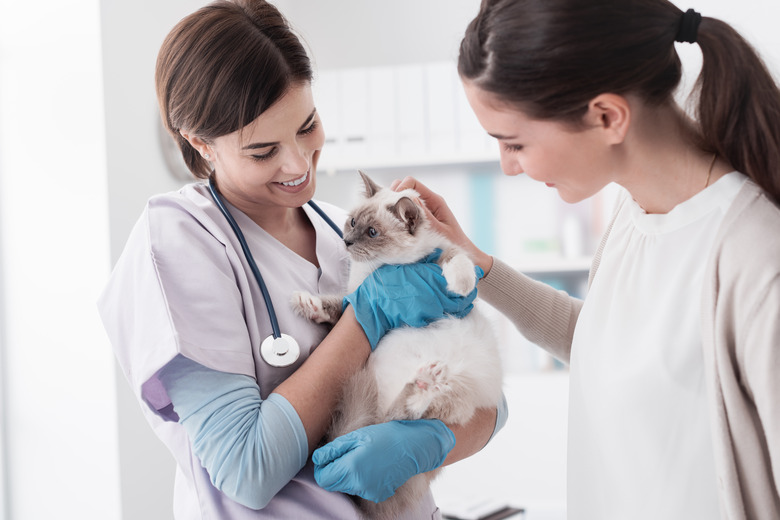Should I Get Pet Insurance?
There's no question that pet owners spend a lot of money on their pets. Between pet food, treats, and toys; services such as grooming and pet sitting; and not to mention veterinary care, our pets are expensive. When you're already spending money on your pets, adding monthly payments to a pet insurance company when your pet is still young and healthy may seem like an unnecessary thing to do. But when you think about potential health problems down the road and the average cost of veterinary care, it might be worth the expense.
Vet bills and pet insurance
Vet bills and pet insurance
If you adopt a pet through some shelters, your pet may come with a temporary pet insurance policy, such as one provided through Pet Partners. This type of coverage usually provides peace of mind when you first get your pet, in case they do something unexpected like chew up their new pet bed out of nervousness. You might receive $500 worth of coverage but pay only a $100 deductible to the insurance company if you need to use the insurance. You would have the option of continuing the coverage once that temporary period ends.
Not all plans are created equal, however. Some cover only services related to accidents (like torn ligaments, bite wounds, cuts, broken bones) and illness and prescriptions. Some bundle accident insurance with illness coverage, in which you can get reimbursement for the costs of issues like cancer, arthritis, and urinary tract infections (UTIs). Surprisingly, vet bills for preventive care and vaccinations are not typically covered.
What is the average cost of pet insurance?
What is the average cost of pet insurance?
The pet insurance monthly premium can be anywhere from $10 to $100 or so, depending on your coverage, but the average cost of pet insurance for dogs is $25 to $50. Cats are slightly less. The amount you pay will depend on the breed of dog, because the insurance companies take into consideration specialized care that some breeds need. Business Insider rounded up the average cost of pet insurance policies for some general mixed breeds, which averaged to $35 to $65 a month from small to large breeds, respectively. A standard poodle was $59.51 a month, and the monthly premium for an American bulldog was $115.40.
The ASPCA's pet insurance program lets you add-on coverage for preventive care, prescription food, or alternative therapy. The ASPCA also does not cover pre-existing or hereditary conditions that don't show symptoms until later in your pet's life. Common hereditary conditions can include heart disease, eye disorders, and hip dysplasia. Some breeds are more prone to these health problems than others. You may be able to get coverage for these conditions as an add-on. The ASPCA's price is based on a quote that takes into consideration the breed of your dog.
Pros of pet insurance
Pros of pet insurance
Specialized veterinary care accounts for a large portion of the money pet owners spend on their pets annually. For many pet owners, the monthly premium gives them peace of mind, that if or when their animal has a problem, they are prepared to pay for it. Treating serious issues or the needs of older pets can get expensive, and when you pay for pet insurance, you might be less likely to cut corners on treatment to save on expenses.
As the North American Pet Insurance Association (NAPHIA) says, paying for pet insurance is just about the cost of a cup of company at a cafe per day, and it gives you the ability to tell your veterinarian to do what needs to be done to help your pet without stressing your finances in a huge, unexpected way.
Cons of pet insurance
Cons of pet insurance
Some of the cons of pet insurance are that it can be difficult to compare plans without providing a lot of information up front. You may not know how easy it is to get your reimbursement or what veterinary care they will pay for until you are in the middle of a crisis. When choosing, research the companies that have a reputation of paying quickly, and that don't require a mountain of paperwork from your veterinarian for payouts.
You may still have to pay for veterinary care, either in the form of co-pays or the full upfront amount, and then seek reimbursement later, which means you may still need a chunk of change all at once. Real Simple says that if your pet develops a chronic condition while covered, the insurance company could drop your coverage or raise your monthly premium.
Getting insurance for an older pet or one that has developed a chronic condition could be costly. As with all insurance, you're paying monthly for services that you may not need. But if you do use it, it could end up saving you money.
In conclusion
In conclusion
Carefully research each pet insurance company and compare the plans, the deductible, the monthly premium, and their policies of reimbursement. Check add-on services and what their policies are for dog breeds with known health problems, what they consider pre-existing conditions, and how they handle chronic health problems that may develop over time.
Many pet owners appreciate the peace of mind that they can take good care of their pets without stretching their budget. If your household budget allows you to put money aside each month in the event of an illness or accident, you may not need pet insurance. However, if you can find a comprehensive plan that covers your specific pet's needs, you could be all set.
Always check with your veterinarian before changing your pet's diet, medication, or physical activity routines. This information is not a substitute for a vet's opinion.
References
- Pet Partners: Shelter and Rescue Support
- Business Insider: The Average Cost of Pet Insurance Largely Depends on the Company You Use and the Type of Pet You Have
- ASPCA: Coverage For Dogs and Cats
- NAPHIA: Find Pet Insurance
- Real Simple: Is Pet Insurance Worth It? Here Are the Pros and Cons to Consider




